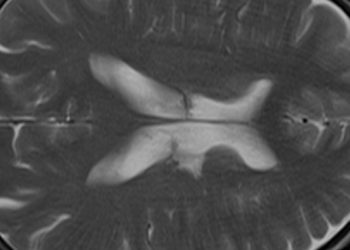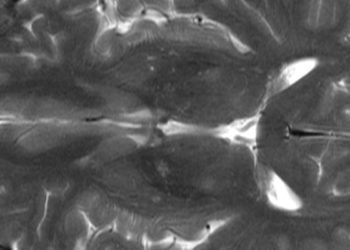Dual anti-platelet therapy reduced 90-day stroke recurrence only for patients with presence of infarct on imaging
1. Patients with a transient ischemic attack or minor ischemic stroke (TIAMS), with an infarct seen on imaging, and that were randomized to dual anti-platelet therapy (DAPT) had a significantly reduced 90-day stroke recurrence compared to patients randomized to aspirin monotherapy.
2. TIAMS patients with no infarct seen on imaging and were randomized to DAPT did not have a significantly reduced 90-day stroke recurrence compared to those on aspirin monotherapy.
3. The risk of major hemorrhage for DAPT compared to aspirin monotherapy did not change based on presence or absence of infarct on imaging.
Evidence Rating Level: 2 (Good)
Short-term dual anti-platelet therapy (DAPT) has been demonstrated to significantly reduce stroke recurrence compared to aspirin monotherapy, in patients with high-risk transient ischemic attack or minor ischemic stroke (TIAMS). However, DAPT also has an increased risk of bleeding events compared to monotherapy, thereby underlying the importance of identifying which TIAMS patients will benefit the most from DAPT. In previous studies, such as the CHANCE trial, an infarction seen on MRI diffusion-weighted imaging has been associated with greater stroke recurrence risk. Therefore, the aim of the current study was to determine if DAPT reduced subsequent stroke risk more for TIAMS patients with an acute infarct observed on any imaging, compared to patients without an acute infarct on imaging. The data for this study was drawn from the POINT randomized controlled trial, which randomized patients to receive either DAPT with clopidogrel and aspirin, or receive aspirin monotherapy, finding that DAPT reduced stroke risk compared to monotherapy. The current study found that an infarct on imaging was associated with a higher risk of ischemic stroke at 90 days, and that DAPT was associated with a significant reduction in subsequent strokes only for patients who had an infarct on imaging, and not for patients without an infarct. As well, the risk of serious bleeding for DAPT compared to monotherapy did not differ based on whether patients had infarct on imaging. Compared to previous studies, the use of any imaging modality, and not just MRI, allowed for greater generalizability. However, characterization of the infarct’s location, pattern, or severity limited the study’s conclusions.
Click here to read the study in JAMA Neurology
Relevant Reading: Clopidogrel and Aspirin in Acute Ischemic Stroke and High-Risk TIA
In-Depth [retrospective cohort]: The study population consisted of 4876 TIAMS patients, 55.0% men, with a mean (SD) age of 65 (13) years. 269 centres participated in the study, from 10 countries in North America, Europe, and Oceania. Overall, 36.8% of patients in the POINT trial had an acute infarct at the index event, and 5.5% of all POINT trial patients had a subsequent ischemic stroke at 90 days follow-up. An infarct seen on imaging was associated with a greater 90-day risk of ischemic stroke (hazards ratio 3.68, 95% CI 2.73-4.95, p < 0.001). For patients with infarct on imaging, DAPT was associated with decreased 90-day ischemic stroke events (HR 0.56, 95% CI 0.41-0.77, p < 0.001). However, patients without infarct on imaging receiving DAPT did not have a reduction in 90-day stroke events (HR 1.11, 95% CI 0.74-1.65, p = 0.62; p for interaction = 0.008). Furthermore, the association of major hemorrhage with DAPT versus aspirin monotherapy did not differ based on whether patients had infarct on imaging (HR 2.05, 95% CI 0.70-5.99, p = 0.19 for infarct; HR 2.59, 95% CI 0.92-7.27, p = 0.07 for no infarct; p for interaction = 0.76). In conclusion, patients with an infarct on imaging had a significant reduction in stroke recurrence with DAPT compared to monotherapy, whereas patients with no infarct on imaging did not have a difference in recurrence, and the risk of serious bleeding for DAPT compared to monotherapy did not change based on presence of infarct on imaging.
Image: PD
©2022 2 Minute Medicine, Inc. All rights reserved. No works may be reproduced without expressed written consent from 2 Minute Medicine, Inc. Inquire about licensing here. No article should be construed as medical advice and is not intended as such by the authors or by 2 Minute Medicine, Inc.







